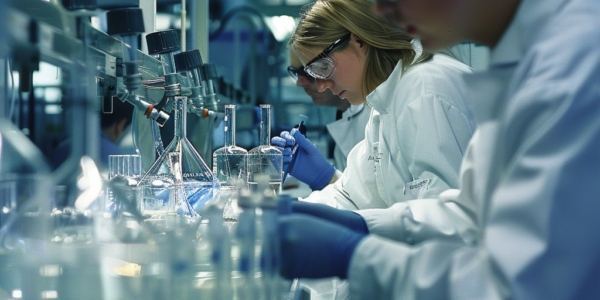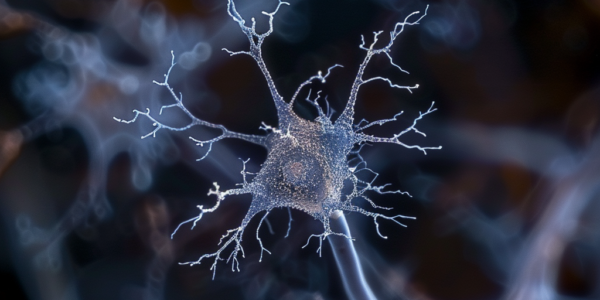Study Reveals Concerning Levels of Toxic Flame Retardants in Car Seat Foam
Recent study reveals high levels of toxic flame retardants in car cabin air, posing health risks to Americans. Researchers call for stricter regulations to ban these chemicals in vehicles. Findings show presence of carcinogenic flame retardants like TCIPP, TNBP, TEP, and TDCIPP, with levels peaking in summer. NHTSA urged to revise safety standards to protect consumers from potential hazards. All-electric vehicles show lower levels of certain toxic flame retardants, highlighting need for regulatory action.
Chemists Create Highly Reactive Chemical Compound After 120-Year Stump
Chemists at the University of Minnesota Twin Cities College of Science and Engineering have achieved a groundbreaking feat by creating a highly reactive chemical compound that has stumped scientists for over 120 years. This significant discovery opens up possibilities for new drug treatments, safer agricultural products, and enhanced electronics, as reported in Science. The breakthrough in synthesizing N-heteroarenes, despite their high reactivity, was made possible through specialized experiments conducted under controlled conditions at the University of Minnesota. This novel chemical compound holds great promise for advancements in medicine, agriculture, and technology.
Study Reveals Skin Absorption of Toxic Flame Retardants in Microplastics
Recent research has revealed the potential health risks associated with toxic flame retardants found in everyday items like plastics and electronics. The study showed that sweatier skin absorbs more cancer-causing chemicals known as PBDEs when in contact with microplastics, highlighting skin absorption as a concerning route for human exposure. This evidence underscores the need for regulators to address the risks of these substances, which have been linked to cancer and endocrine disruption.
New Englanders at Higher Risk for PFAS Exposure Due to Seafood Consumption, Study Finds
A recent study from Dartmouth has found a potential link between higher consumption of seafood and increased PFAS exposure in New England, particularly in New Hampshire. The study analyzed PFAS concentrations in fresh seafood and highlighted the state’s proactive approach to addressing PFAS concerns. The findings underscore the need for further research and potential regulatory measures to address PFAS exposure through seafood consumption in regions with a strong cultural tradition of seafood consumption like New England.
New Strategy for Assessing Applicability of Chemical Reactions Developed by University of Münster Chemists
Chemists at the University of Münster have developed a computer-aided, bias-free method for selecting model substrates to evaluate new chemical reactions, aiming to improve the quality and information content of chemical reaction data and close knowledge gaps. The method is based on the complexity and structural properties of real pharmaceutical compounds, with the goal of lowering the barriers to the application of new reactions in both academic and industrial contexts. The work, published in the journal ACS Central Science, aims to initiate a ‘rethinking process’ in the evaluation of chemical reactions and represents an important step towards standardizing and objectifying the development and evaluation of chemical reactions.
Household Chemicals May Adversely Affect Brain Development, New Study Finds
A new study suggests that everyday household chemicals, found in disinfectants, furniture, and even toothpaste, could have adverse effects on brain development. The study highlights the potential risks posed by these substances to brain health and their potential association with neurological conditions such as multiple sclerosis and autism spectrum disorders. The findings call for more comprehensive scrutiny of the impacts of common household chemicals on brain health and suggest the need for informed decisions regarding regulatory measures or behavioral interventions to minimize chemical exposure and protect human health.
Study Finds Environmental Chemicals Impact Oligodendrocyte Development
A recent study published in Nature Neuroscience has found that environmental chemicals can impact the development of oligodendrocytes, crucial for neurodevelopment. The study identified two classes of chemicals, quaternary compounds and organophosphate flame retardants, that disrupt oligodendrocyte development through distinct mechanisms. The research also demonstrated the impairment of oligodendrocyte development in mice and human 3D organoid models, as well as associations with adverse neurodevelopmental outcomes. This highlights the need for further investigation into the potential impacts of these environmental chemicals on human health.
Study Links PFAS Chemicals in Blood with Increased Risk of Cardiovascular Diseases
Study from DZNE – German Center for Neurodegenerative Diseases links PFAS chemicals in human blood to increased risk of cardiovascular diseases. Even low concentrations of PFAS are associated with unfavorable blood lipid profiles, especially in younger individuals. The findings raise concerns about the long-term impact on public health, highlighting the need for stricter regulations and further research on the health effects of PFAS.
Researchers Develop Energy-Efficient Strategy for Ethylene Synthesis via CO2 Reduction
Researchers at Université Montpellier and other institutes have developed a new strategy to facilitate the energy-efficient synthesis of ethylene via the reduction of carbon dioxide. Their approach involves functionalizing copper catalysts for CO2 reduction using aryl diazonium salts, aiming to address the modest selectivity for ethylene and improve energy efficiency. This breakthrough is expected to have significant implications for the energy industry and environmental sustainability.
Report Highlights Health Hazards of Endocrine Disrupting Chemicals in Plastics and Pesticides
A new report by the Endocrine Society and IPEN highlights the health hazards associated with Endocrine Disrupting Chemicals (EDCs) found in plastics and pesticides. The report raises concerns about the risks to human health and emphasizes the urgent need to address the implications of these chemicals. With EDCs being linked to hormone-related health conditions, the report serves as a wake-up call to the potential risks associated with these chemicals in our daily lives.










